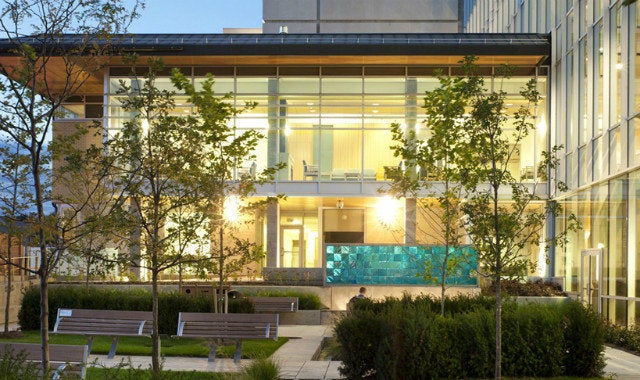
This week, 40,000 people will gather at Greenbuild 2012 in San Francisco to celebrate the green building movement.
And we've got a lot to cheer about.
In the depths of the recession, while the U.S. construction market was in trouble, the green building market actually grew - and McGraw Hill projects that green buildings will account for half of U.S. commercial construction activity in 2015.
It's no wonder why. According to research conducted by UC Berkley Professor Nils Kok, green buildings command 7 percent higher cash flow for owners, and 13 percent higher premiums at the time of sale.
This isn't just great news for our industry. It's great news for the American economy. Green buildings save money, earn higher returns, and drive amazing innovations in technologies being developed right here in the United States.
Today green building is a half-trillion dollar industry in the United States, and nearly twice that worldwide. USGBC's LEED rating system has become a national standard and a global brand for green building. Consumers see green certification as a mark of quality and safety - which it most certainly is.
The U.S.'s largest construction sector is also the best example of the positive influence of the green building industry: schools. As students, and later as parents or teachers, every one of us has spent significant parts of our lives in and around school buildings. In fact, one in five Americans spends his or her day in a school.
Aside from being our largest construction sector, schools shape the experiences we offer our kids every day - keeping them safe, healthy, and learning. Green schools improve on all three criteria.
Green schools mean better air quality, reducing asthma and respiratory illness in children by up to 65 percent.
Green schools mean more daylight in classrooms, better acoustics, and comfortable temperatures to help kids concentrate and learn.
Green schools mean more pleasant work environments for teachers and staff, and less teacher turnover.
And of course, green schools save money - by consuming water and energy more efficiently, they are less expensive to operate.
All of this leads us to one simple conclusion: the quality of the buildings we spend time in really matters. That's why USGBC is working hard to make sure that every child has the chance to attend a green school through our Center for Green Schools.
But our goals are much larger than that. We want every building to be a green building.
And why not? Green buildings are safer, more cost-effective, and provide healthier environments. They attract higher rents and higher sale prices. And the technologies behind them are developed here in the US.
When you put it that way, green building is like a stimulus program that actually saves money.
If that sounds like something both political parties can get behind, well, it is. After all, green building isn't about politics - it's about business.
In President Obama's first term, he took important steps to promote green building in the federal government. Not because it was a political issue, but because it was a good deal for American taxpayers and federal workers - from teachers, to mail carriers, to the military.
It was a good first step. And we are ready to work with the Obama administration to do even more for green building in the President's next term.
The green building industry stands ready to create millions of jobs and improve millions of lives.
That's our rallying cry next week in San Francisco. And I hope our voices reach all the way to Washington, because the green building industry is ready to lead America's economic comeback.
